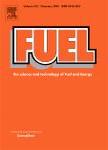版权所有:内蒙古大学图书馆 技术提供:维普资讯• 智图
内蒙古自治区呼和浩特市赛罕区大学西街235号 邮编: 010021

作者机构:Univ KwaZulu Natal Sch Engn Thermodynam Res Unit ZA-4041 Durban South Africa Islamic Azad Univ Buinzahra Branch Dept Chem Engn Buinzahra Iran Inst Rech Genie Chim & Petr Paris France Univ Laval Fac Sci & Genie Dept Genie Mines Met & Mat Quebec City PQ G1V 0A6 Canada
出 版 物:《FUEL》 (燃料)
年 卷 期:2015年第158卷
页 面:122-128页
核心收录:
学科分类:0820[工学-石油与天然气工程] 080702[工学-热能工程] 0817[工学-化学工程与技术] 08[工学] 0807[工学-动力工程及工程热物理]
基 金:South African Research Chairs Initiative of the Department of Science and Technology National Research Foundation
主 题:Surfactant retention Gene expression programming Model Chemical flooding Porous media
摘 要:The loss of surfactant can reduce the technical and economic efficiency of chemical surfactant flooding in the recovery of residual oil. Retention of surfactant molecules is thus recognized as a fundamental problem in chemical recovery based methods. Therefore, reliable methods which are able to rapidly estimate the surfactant retention are of importance. In this communication, a new model is proposed for the determination of surfactant retention in porous media during chemical flooding. The mathematical algorithm adopted in the development of the model is gene expression programming (GEP). The input parameters for the new model are temperature, maximum effluent pH, reservoir rock type i.e., carbonated or sandstone, co-solvent concentration, average molecular weight of surfactant mixture, total acid number (TAN), absolute permeability, mobility ratio, and salinity of polymer. Several statistical and graphical error analyses were applied to assess the performance and accuracy of the proposed model. A comparison was also performed between the newly developed model, a smart method, and a previously published empirical correlation available in literature. The newly developed model performs, overall, superior to the methods compared. Estimations were found to be within acceptable agreement with the literature-reported data of surfactant retention, with an average absolute relative deviation of approximately 16.6%, and a R-squared value of 0.92. (C) 2015 Elsevier Ltd. All rights reserved.